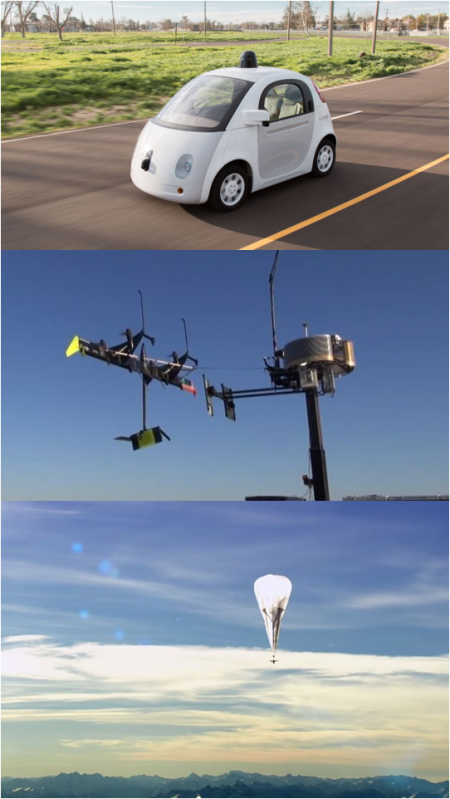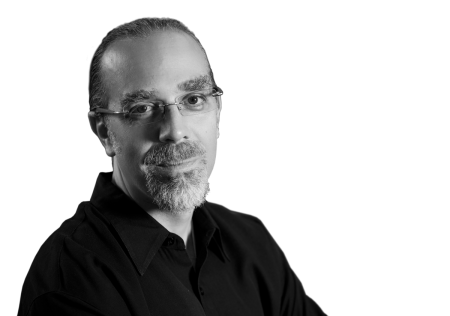April 17, 2016 – It has been a few weeks since I shared with you one of Peter Diamandis’ weekly email blasts. Not all are suitable fodder for this blog. But the one describing Google’s R&D factory, known as “X” and strategies employed there I felt was worth restating. X is in the business of inventing and launching “moonshot” technologies. These are technologies focused on solving tough problems and require environments that encourage “out-of-the-box” thinking, experimentation and failure.
The chief of X is Astro Teller, a graduate of Carnegie Mellon University, engineer, entrepreneur and author, who is featured in a February 2016 TED Talk entitled “The unexpected benefit of celebrating failure.” The talk is fascinating to listen to as is the description of the “failure” strategy X uses to create technological breakthroughs such as the driverless car, tethered airborne wind turbines, and balloon deployed global WiFi, just to name a few.
———-
X, formerly known as Google X, consists of a team of world-class engineers, scientists, and creatives developing solutions to dozens (perhaps hundreds) of the world’s toughest problems. Some of their public projects include: the self-driving car project, the smart contact lens, and Project Loon, just to name a few.
In this, the first of a two part series shared by Diamandis, we learn about moonshots and the culture and principles that guide X in taking them on.
First – What is a Moonshot?
At X Teller and his team look for the intersection of three key factors for moonshots. These are:
- It’s a Big Problem: “We start with a large problem in the world that if solved could improve the lives of millions or even billions of people.”
- The Problem Has a Science-Fiction-Sounding Solution: “We propose a radical solution that sounds impossible today, almost like science fiction.”
- There is Technological Evidence It Could Work: “We look for a technology breakthrough that exists today. This gives us the necessary hope that the solution we’re looking for is possible, even if its final form is five to 10 years away.”
This unique approach to problem solving has generated some extraordinary (and some crazy) ideas– but the even harder part is implementation, and to do so, you have to ascribe to the following principles.
What Are The Principles For Solving X?
Teller shares the following principles which allow X to build processes and a culture around selecting and executing ideas. This list is by no means exhaustive.
Principle 1: Ideas Are the Easy Part
A lot of people think “having an idea” is the hardest part of starting a company or solving a problem.
The fact is: the idea is probably the easiest part… The world is awash with ideas, and most ideas aren’t that good. The hard part is actually creating an ecosystem and infrastructure to allocate resources (talent, time, money) for rapidly evaluating and testing ideas. How do you create a culture where bad ideas are filtered out and people are continually motivated to keep trying new ideas? If you iterate enough and continuously toss out the weak ideas, you will (hopefully) eventually find a great one.
Principle 2: Try to Kill Your Best Ideas Early
If people, money and time are your most scarce resources, you don’t want to waste them on ideas that won’t work. Instead, you want to kill these early. The best way to do that is to establish a culture that incentivizes killing ideas.
Teller explains, “The moonshot factory is a messy place. But rather than avoid the mess, pretend it’s not there, we’ve tried to make that our strength. We spend most of our time breaking things and trying to prove that we’re wrong…..That’s it… that’s the secret.” Teller continues, “Run at all the hardest parts of the problem first. Get excited and cheer,’ Hey! How are we going to kill our project today?'”
Here’s two effective strategies X employs on a regular basis for killing weak ideas early:
- Run a “Pre-mortem”: We’ve all heard of postmortems where you analyze an idea in retrospect to find out why it failed. But what about trying to predict in advance why an idea is likely to fail? X calls this a pre-mortem. At X, teams typically vote to kill their ideas in a pre-mortem. When they do actually kill an idea, they are celebrated and rewarded by the organization.
- Rapid “Eval-Team”: Before moving forward with a project, X employs a team to analyze the technical feasibility of projects. Given the known laws of physics and X’s available resources, is this solution physically possible? If not, kill it.
The strategy is pretty simple — you need to be constantly trying to come up with reasons an idea won’t work, why you can’t pull it off, why you don’t have the right resources to do it, etc.
The ideas that survive this process (the ideas you literally can’t kill) are the good ideas worth pursuing.
Principle 3: Set Quarterly Audacious Goals with the Emphasis on Audacious
Most companies set quarterly goals in a contentious manner. The manager sets a high bar to stretch the employee, and the employees want to set a lower bar they know can be met. In the end, both parties settle somewhere in the middle and nobody is happy with the result.
At X, the goal is for each team to set audacious, ridiculously hard quarterly goals. X has a culture where each team has the objective of impressing the other teams with how audacious they’re willing to be. Note these goals should be just audacious enough that they are still plausible but not impossible.
The result is a culture of bravery and persistence.
Teller notes, “It is frequently the case that not a single person hits their audacious goals, but that’s okay…” He continues, “Create an organization that looks like Willy Wonka’s Chocolate Factory and fill it with Peter Pans with PhDs. You need to make them understand and feel good about the fact that they are going to fail most of the time. And they’ll love it when you let them go.”
Principle-4: Failing Is Not “Wasting” Time and Money
States Teller, “I often ask my project managers if you had to rebuild your last project from scratch (Let’s say you lost all your code), how long would it take you to rebuild it, assuming you had your same team in place, to what it is now?”
“They usually say, ‘I don’t know…10% of the original time?'” continues Teller. “There is a name for that other 90% — it’s called LEARNING. The job of a great manager, a great entrepreneur and a great CEO is to try to make that 90% time shorter. Focus on how to make it as short as possible, as efficient as possible.” If a team is working on solving a difficult problem and a manager complains that they are “wasting time and money and not getting anywhere,” get rid of the manager. That so-called wasted time is actually your team learning.
Teller further comments, “It’s also extremely important as a manager not to swoop in and kill projects you ‘know’ are going to fail. You have to allow your team to fail, and watch the snowball effects of what they learn ripple through your organization. This creates a culture where folks will continue to try to solve problems and won’t be afraid of failing.”
Principle 5: Perspective Shifting Is More Powerful Than Being Smart
Sometimes shifting your perspective on solving a problem is more powerful than being smart. This is one of X‘s mantras. Teller explains, “Take wind energy. It’s one of my favorite examples of perspective shifting. There’s no way that we’re going to build a better standard wind turbine than today’s experts in that industry. But we found a way to get our turbines up higher into the sky, and to get access to faster, more consistent winds, and to more energy without needing hundreds of tons of steel to get the turbines there.” He continues, “We haven’t yet found a way to kill this project. And the longer it survives that pressure, the more excited we get that this could become a cheaper and more deployable form of wind energy for the world.” When faced with a seemingly impossible problem, sometimes you need to shift your perspective, question each assumption and see what crazy ideas may actually be the basis for a fundamental breakthrough.











